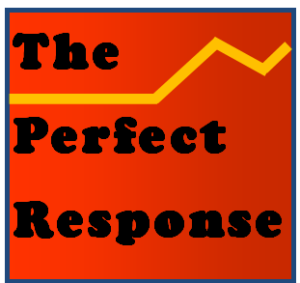Sadly, most musicians and the filmmakers that we think of as making life worth living receive almost nothing in return.
The strikes of writers and actors that have halted most narrative video and film production is an unhappy effect of the digital revolution. More, streaming of audio and video content has swamped the already shaky formulas for compensating artists for their works. I’m talking broadly here of musicians, actors, and the far larger numbers of support people who make their performances possible. Most of these arts workers have been locked out of receiving fair compensation for their work. For our purposes here let’s set aside the relatively small number of stars who soak up most of the attention and money.
For a moment we need to go back to the middle of the last century to glimpse parts of the entertainment universe before the coming tsunami. In the 1950s the Hollywood studios still had departments that supported a range of crafts workers: everyone from choreographers and musical arrangers to painters and costumers. Studios like Warner Brothers expected that these folks would show up every day and punch in like the many other manufacturing workers in the Los Angeles area. In exchange for their essential talents of making the stars look better they received a regular salary and the advantage of a steady income.
 To a lesser extent, but still possible, their musical counterparts could usually find work in local clubs, live television and radio, recordings, and backing for visiting artists. The most successful toured with Count Basie, Duke Ellington, Benny Goodman, and a significant number of other 10- to 15-piece bands riding the crest of the Swing era. There were also many local versions of these groups who made the rounds of weddings, shows and clubs. After all, Swing was made for dancing. And nearly every city had clubs and dance halls with live music. For example, the 150-foot-long dance floor bathed in plush light at Elitch’s amusement park in Denver was rarely empty on a summer night. In the same era, singer Judy Collins’ father, Chuck Collins, was a local celebrity with daily live music on the city’s powerful KOA radio. For a long time radio was live music.
To a lesser extent, but still possible, their musical counterparts could usually find work in local clubs, live television and radio, recordings, and backing for visiting artists. The most successful toured with Count Basie, Duke Ellington, Benny Goodman, and a significant number of other 10- to 15-piece bands riding the crest of the Swing era. There were also many local versions of these groups who made the rounds of weddings, shows and clubs. After all, Swing was made for dancing. And nearly every city had clubs and dance halls with live music. For example, the 150-foot-long dance floor bathed in plush light at Elitch’s amusement park in Denver was rarely empty on a summer night. In the same era, singer Judy Collins’ father, Chuck Collins, was a local celebrity with daily live music on the city’s powerful KOA radio. For a long time radio was live music.
Augmenting these chances for live performances (87 for just Tony Bennett and his musicians in 2012), recording opportunities came to bands and singers who could claim a following. If payment for recording a session in a studio was not generous, the sale of the resulting records would fill in the gap. And it is worth remembering that the country nurtured a frenzy of record sales across most musical forms. For 80 years record stores were a common sight in most towns. Americans were happy to pay for the music they loved, sometimes forgoing essentials to build vast collections. Jazz legend Miles Davis’s album for Columbia, Kind of Blue (1959) sold an astonishing six and a half million vinyl copies (for about $25.00 a copy in current U.S. dollars.)
On the television network side of the same company that owned Columbia, CBS’s situation comedies, soaps and game shows began to rake in huge and recurring advertising for itself and the talent that produced programs and series episodes. As with the big studios still making films for theaters, cash flowed to armies of crews with plenty of work. In short, thousands of musicians, crafts workers, writers, composers and performers were supported by an ongoing system of compensation. Eventually, and with union help, residual checks would keep coming when older programs were purchased to rerun on content-hungry television stations.
![]()
Producers of shows with a prerecorded score have calculated that they can cheat the performers and audience out of the experience of live music.
To be sure, media production work has rarely been the easiest way to make a living. But there were always pockets of opportunity. But consider, as well, the prospects that have disappeared. Most extended families today probably include a talented musician who will struggle to live on the proceeds of their work. As we have seen, a generation ago they had a better chance to find a niche as a live performer. There is no doubt we have more access to music and video content today, but there are fewer rewards for the performers with less name recognition who must survive on incomes more typical of a part-time worker. An actor who gets one “guest” appearance on a sit-com may gross about $6,000. A musician accompanying a singer would typically get less. And there is now a nearly complete shutout at the very bottom, where producers of shows ranging from high schools to Broadway have decided to cheat the audience out of the experience of live music.
Of course, nothing lasts forever. But digital media in its current and dominant form of streaming has been a disaster for most video and musical artists, and none too generous for those who should be doing well. Netflix and other streamers have driven production schedules to be more “efficient,” mostly by turning writers and “below the line” crews into “gig” workers. Writers who used to remain under contract if a series ran for a season are now hired to crank out scripts quickly and then let go. No more visits to the set for a series, and no more time in the writer’s room to draft updates of scenes that are not working. No wonder screenwriters and series-tv staffs feel squeezed.
 And it’s even worse for musicians, where A.I. has been replacing players for years. For some time, composers for films, television and games have been using huge music databases that contain digital samples of virtually any kind of musical instrument or chord combination. Composing and arranging can be done on a computer, then “performed” using “musicians in a box” software. One result is that the glorious acoustics of the Eastwood and Streisand sound stages in Hollywood are heard less often, even though lightning-fast sight-readers in town can still deliver a full score of a feature film in one “take.”
And it’s even worse for musicians, where A.I. has been replacing players for years. For some time, composers for films, television and games have been using huge music databases that contain digital samples of virtually any kind of musical instrument or chord combination. Composing and arranging can be done on a computer, then “performed” using “musicians in a box” software. One result is that the glorious acoustics of the Eastwood and Streisand sound stages in Hollywood are heard less often, even though lightning-fast sight-readers in town can still deliver a full score of a feature film in one “take.”
And it gets even worse. Nearly all of the financial rewards associated with these industries go to the distribution channels. The preference for streaming music almost amounts to a kind of legalized ‘theft of service’ of performers by streaming customers. For about eleven dollars a month Apple or Spotify will give you full access to any specific musical choices, with practically no limits. We probably don’t need to worry about the low rates of return that Spotify gives to Taylor Swift. But other professional musicians are making only pennies for the use of their music on the site (usually: three dollars for a thousand streams on Spotify). And if musicians do not own the publishing rights, payments could be even less. As the New Yorker’s Alex Ross noted recently, “the market value of recorded music has been marked down to almost nothing.”
Three simple solutions to some of these problems make sense. Go to live performances for theater and music. More of the proceeds will go back to the performers. And try buying their recorded music or merchandise directly through their websites. Compared to streaming, a higher percentage of the income from hard copy media sales will come to the performers. And finally, keep insisting that schools and colleges support live performances. Adequately funded High schools have an abundance of theater kids eager to keep classic musicals alive, and colleges have done the same for the evolving jazz and big-band repertoire.
![]()

